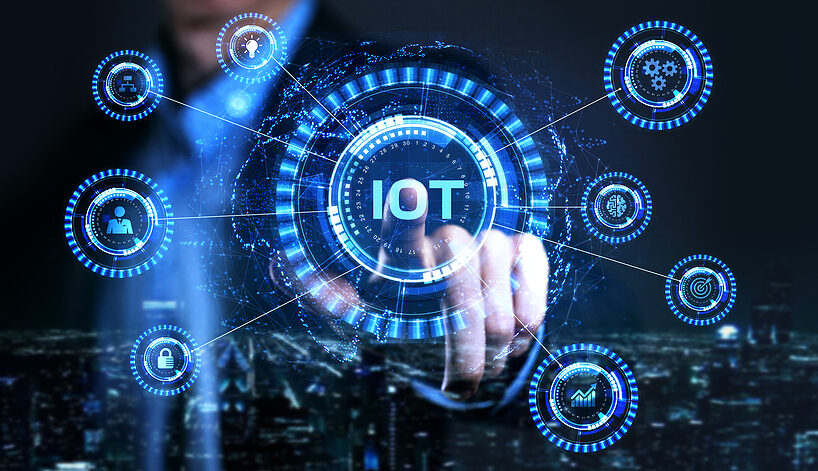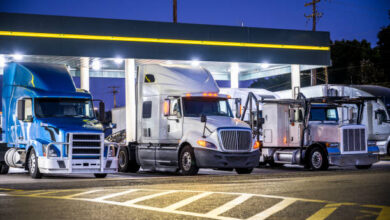Revolutionizing Connectivity: A Deep Dive into the Internet of Things (IoT)

Introduction
In an increasingly interconnected world, the Internet of Things (IoT) has emerged as a technological marvel, transforming the way we live, work, and interact with our surroundings. IoT represents a vast network of interconnected devices and sensors, facilitating data exchange and automation across industries and everyday life. In this comprehensive article, we will explore the intricacies of the Internet of Things, its core principles, current and potential applications, challenges, and the profound impact it is having on our society.
Understanding the Internet of Things (IoT)
1. The Essence of IoT
At its core, IoT refers to the network of physical objects, devices, vehicles, and even buildings embedded with sensors, software, and connectivity capabilities that enable them to collect, exchange, and act upon data. Key elements of IoT include:
1.1. Connectivity:
IoT devices are connected to the internet or other networks, allowing them to transmit and receive data. This connectivity can be wired or wireless, depending on the application.
1.2. Sensors:
IoT devices are equipped with various sensors, such as temperature sensors, motion detectors, and cameras, which collect data about their environment or status.
1.3. Data Processing:
IoT devices process the data they collect locally or in the cloud, where it is analysed and turned into actionable insights.
1.4. Action:
IoT devices can take automated actions based on the data they collect, such as adjusting thermostat settings, sending alerts, or controlling machinery.
2. The Building Blocks of IoT
IoT relies on several foundational technologies and concepts:
2.1. Sensors and Actuators:
Sensors capture data from the physical world, while actuators perform actions based on that data. Together, they enable IoT devices to interact with their environment.
2.2. Connectivity:
Reliable connectivity, whether through Wi-Fi, cellular networks, or low-power protocols like Bluetooth Low Energy (BLE), is crucial for IoT devices to transmit data to central systems or other devices.
2.3. Data Analytics:
IoT generates vast amounts of data. Analytics tools, including machine learning and artificial intelligence, are used to extract valuable insights from this data.
2.4. Security:
IoT devices are vulnerable to cyberattacks, making security measures, including encryption, authentication, and regular updates, essential.
2.5. Cloud Computing:
Cloud platforms store and process IoT data, offering scalability and accessibility to businesses and users.
Current and Emerging Applications of IoT
1. Smart Homes
IoT has revolutionized home automation, giving rise to smart homes. Devices like smart thermostats, lighting systems, and security cameras can be controlled remotely via smartphones or voice assistants. IoT also enables energy-efficient homes by optimizing resource usage.
2. Healthcare
In healthcare, IoT devices such as wearable fitness trackers and remote patient monitoring systems have become invaluable. They enable healthcare providers to track patients’ vital signs, making early intervention possible and reducing hospitalization rates.
3. Transportation
IoT is transforming transportation with applications like connected cars. These vehicles can communicate with each other and infrastructure, enhancing safety, traffic management, and even enabling autonomous driving.
4. Agriculture
IoT-powered precision agriculture helps farmers optimise crop management. Sensors collect data on soil moisture, temperature, and crop health, allowing for precise irrigation and resource allocation.
5. Smart Cities
IoT plays a pivotal role in the development of smart cities. Applications include smart traffic management, waste management, environmental monitoring, and public safety enhancements.
6. Industrial IoT (Eliot)
In the industrial sector, Eliot is improving operational efficiency and reducing downtime. Sensors in manufacturing equipment can provide real-time data for predictive maintenance, ensuring machines run smoothly.
7. Retail
IoT enhances the retail experience with innovations like smart shelves, which monitor inventory levels and provide personalized customer recommendations through smartphone apps.
8. Environmental Monitoring
IoT helps monitor and combat environmental issues. Sensors can collect data on air quality, water quality, and wildlife behavior, aiding in conservation efforts.
9. Energy Management
IoT is instrumental in optimizing energy usage. Smart grids, connected appliances, and energy-efficient buildings are all made possible by IoT technology.
10. Logistics and Supply Chain
IoT improves supply chain visibility. Companies can track the movement and condition of goods in real-time, reducing theft, spoilage, and delivery delays.
Challenges and Concerns
While IoT holds tremendous promise, it also faces significant challenges and concerns:
1. Security Vulnerabilities
IoT devices can be vulnerable to cyberattacks. Insecure devices can serve as entry points for hackers to gain access to networks or compromise user privacy. Ensuring robust security measures is paramount.
2. Privacy
The vast amount of data collected by IoT devices raises privacy concerns. Users may be uncomfortable with the amount of personal information being gathered, leading to calls for stringent data protection regulations.
3. Interoperability
The IoT landscape is diverse, with numerous devices from different manufacturers. Ensuring interoperability and seamless communication between devices remains a challenge.
4. Data Overload
IoT generates enormous amounts of data, which can overwhelm organisations. Effective data management and analytics are necessary to derive actionable insights.
5. Standardization
The lack of universal standards can hinder IoT adoption. Establishing common protocols and standards is crucial for ensuring compatibility and security.
6. Power Consumption
Many IoT devices rely on batteries, and improving power efficiency is essential for extending device lifespans and reducing maintenance efforts.
7. Ethical Concerns
IoT can raise ethical questions, such as the responsible use of AI algorithms and the potential for IoT-enabled surveillance.
The Future of IoT
The future of IoT is filled with exciting possibilities:
1. Edge Computing:
Edge computing, where data processing occurs closer to the source, will reduce latency and enhance real-time decision-making for IoT applications.
2.5G Connectivity:
The rollout of 5G networks will provide faster and more reliable connectivity, accelerating the adoption of IoT.
3. AI Integration:
Integrating artificial intelligence with IoT will enable more sophisticated data analysis and predictive capabilities.
4. Blockchain for IoT:
Blockchain can enhance the security and trustworthiness of IoT data, ensuring data integrity and authentication.
5. Sustainability:
IoT can contribute to sustainability efforts by optimizing resource usage, reducing waste, and improving energy efficiency.



